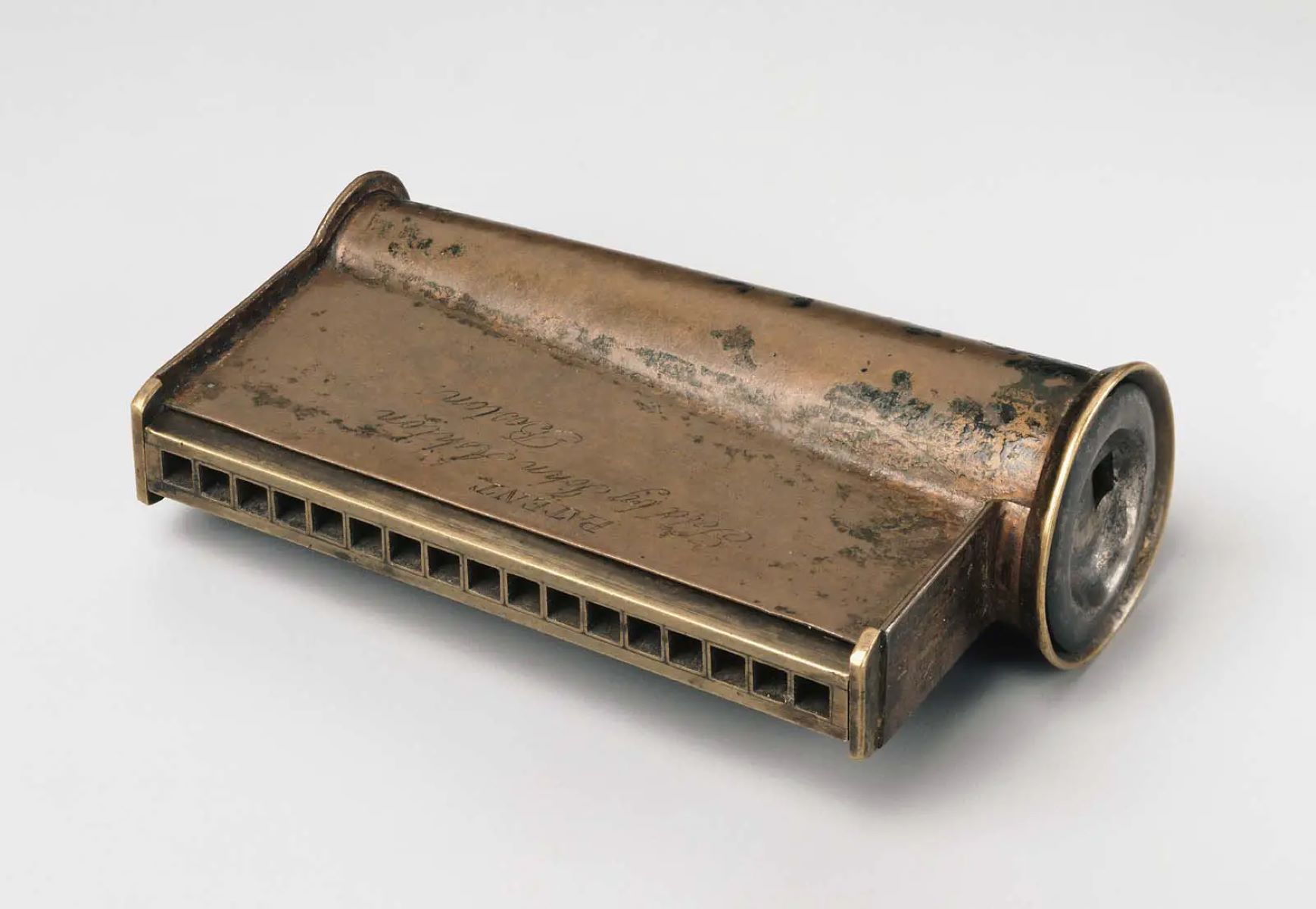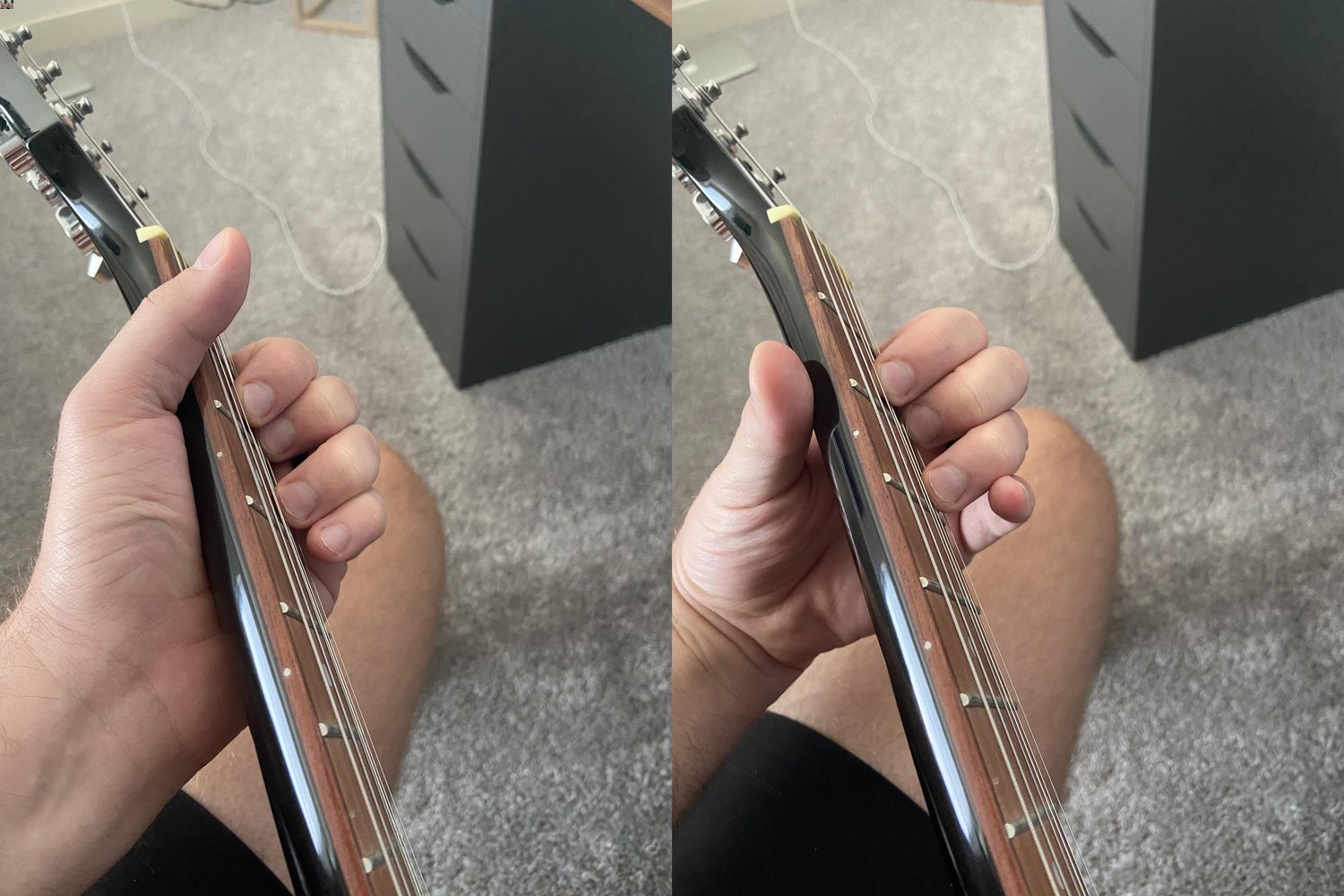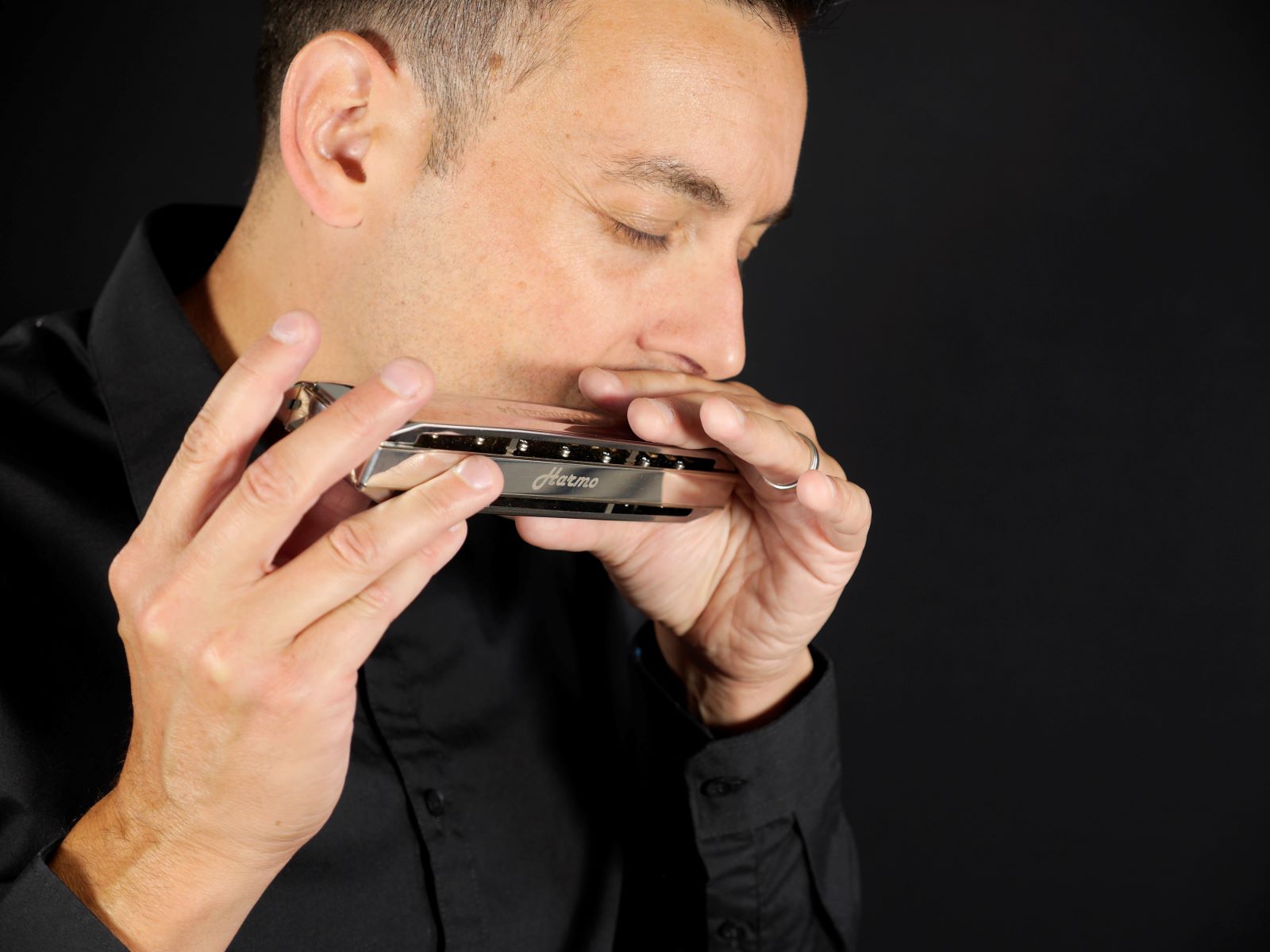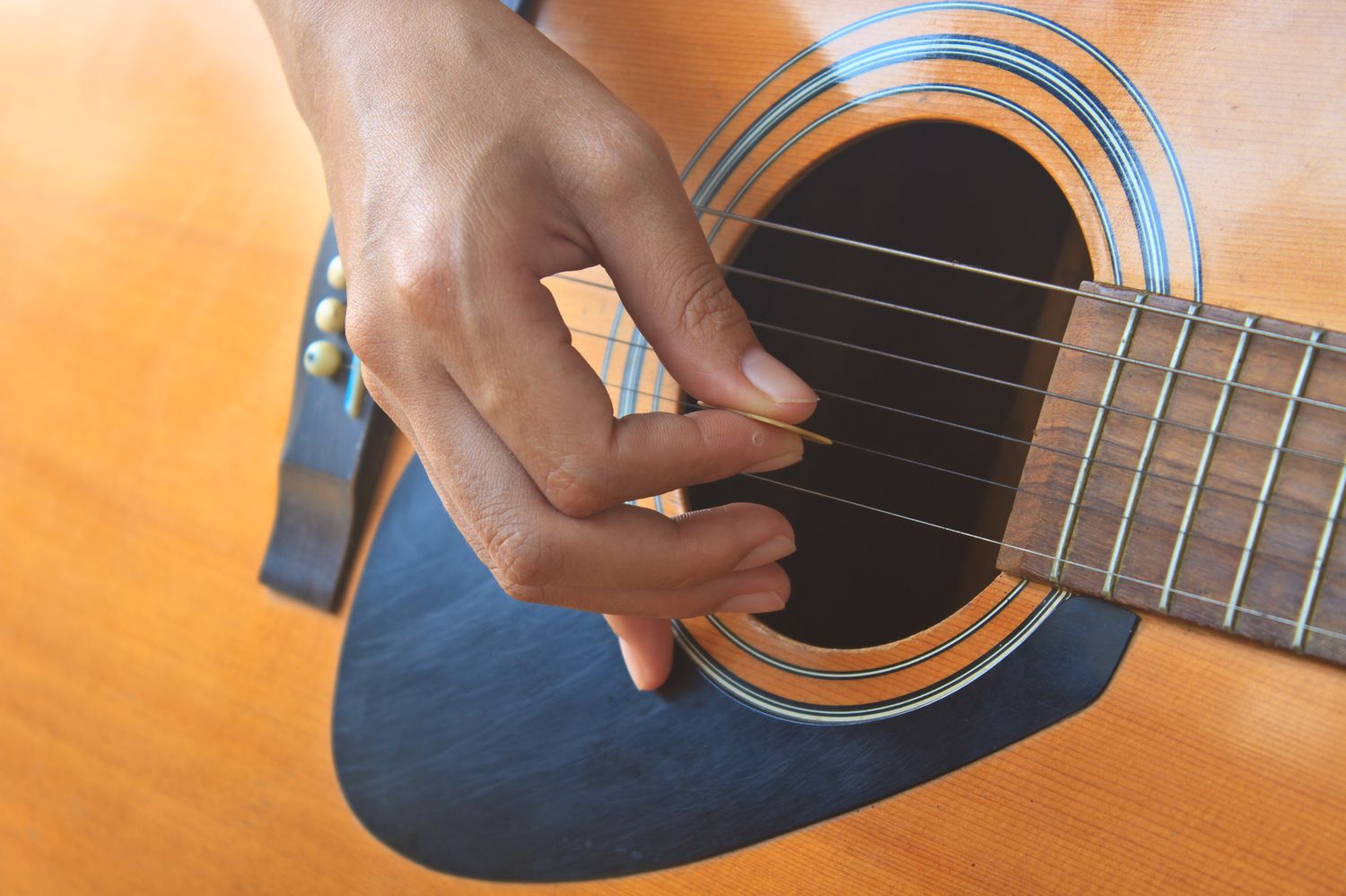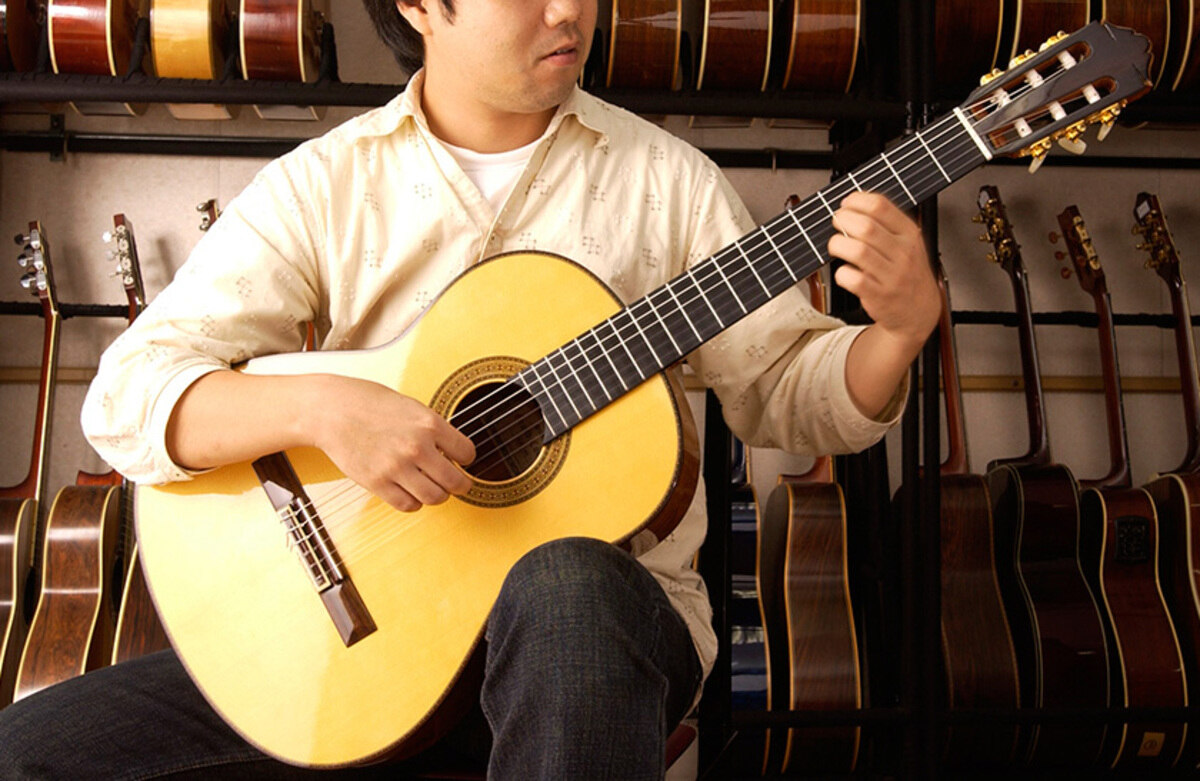Home>Instruments>Harmonica>How Do You Hold A Harmonica


Harmonica
How Do You Hold A Harmonica
Modified: February 17, 2024
Discover the best techniques on how to hold a harmonica with our step-by-step guide. Improve your harmonica playing skills and enhance your musical performance.
(Many of the links in this article redirect to a specific reviewed product. Your purchase of these products through affiliate links helps to generate commission for AudioLover.com, at no extra cost. Learn more)
Table of Contents
Introduction
Playing the harmonica is not just about producing soul-stirring melodies or indulging in the heartfelt blues; it also requires mastering the art of holding this small but powerful instrument. As any harmonica player will tell you, the way you hold the harmonica can significantly impact your playing technique and overall performance.
In this article, we will explore the various techniques and methods for holding a harmonica, ranging from traditional handheld methods to more advanced techniques utilizing holders and stands. By understanding the different options available, you can find the most comfortable and efficient way to hold the harmonica that suits your playing style and preferences.
Whether you are a beginner embarking on your harmonica journey or an experienced player looking to refine your technique, this comprehensive guide will provide you with the knowledge you need to master the art of holding a harmonica.
So, let’s dive in and discover the different techniques and tips for holding a harmonica that will not only enhance your playing experience but also elevate your harmonica skills to new heights!
Understanding the Basics of Holding a Harmonica
Before we delve into the specific techniques and methods for holding a harmonica, it is essential to have a basic understanding of its structure and components. The harmonica consists of a series of reeds, which produce sound when air is blown or drawn through them. The reeds are mounted on a comb, usually made of plastic or wood, which acts as a resonating chamber.
When holding a harmonica, the hands play a crucial role in creating a seal around the instrument, allowing you to manipulate the airflow and produce the desired notes and melodies. The position and grip of the hands can greatly impact the ease of playing, breath control, and overall sound quality.
Additionally, it is important to note that there are different types and sizes of harmonicas available, such as diatonic, chromatic, and tremolo harmonicas. Each type may require a slightly different approach to holding and playing, so it is essential to familiarize yourself with the specific instrument you are using.
Now that we have a foundation of understanding let’s explore the different techniques for holding a harmonica in the upcoming sections. Whether you prefer the traditional handheld method or want to experiment with more advanced techniques involving holders and stands, there is an option that will suit your playing style and needs.
Different Techniques to Hold a Harmonica
When it comes to holding a harmonica, there are various techniques and methods to choose from. Your choice will ultimately depend on your personal preferences, playing style, and the type of harmonica you are using. Let’s explore some of the most common techniques:
- Traditional Handheld Technique: This technique involves holding the harmonica using your hands and manipulating it with your lips and tongue. The most common way to hold the harmonica is known as the “cupping” technique. In this method, you hold the harmonica between your thumb and index finger, creating a seal around it with your hands. This allows you to control the airflow, produce different notes, and create various effects like bends and vibrato.
- Neck Holder Technique: The neck holder technique is commonly used by harmonica players who want to free up their hands for other instruments or activities. It involves attaching a harness or neck holder to the harmonica, allowing you to play it hands-free. This technique is particularly useful for performers who want to incorporate harmonica playing into their guitar playing, for example.
- Holder and Stand Techniques: For those who prefer a more stationary playing setup or want to explore different playing angles, holders and stands for harmonicas are available. These accessories keep the harmonica in a fixed position, allowing you to use your hands for other tasks like playing guitar or keyboard. Stand techniques are also popular for harmonica players in a band setting, as it provides stability during live performances.
Remember, the technique you choose will depend on your personal comfort and the specific requirements of your playing style. It is crucial to experiment with different techniques to find the one that suits you best. Ultimately, the goal is to have a comfortable and secure grip on the harmonica that allows you to play with ease and control.
Traditional Handheld Technique
The traditional handheld technique is the most common and widely used method for holding a harmonica. This technique allows for precise control and manipulation of the instrument using your hands, lips, and tongue. Here’s how to do it:
- Find the right grip: Start by holding the harmonica in your left hand if you’re right-handed (or in your right hand if you’re left-handed). Place your thumb on the bottom side of the harmonica, using it as a support point, while wrapping your fingers around the other side. Make sure to leave a small gap between your palm and the comb of the harmonica to allow for proper airflow.
- Create a seal: With the harmonica in your hand, bring it up to your mouth and position it between your lips. Tilt the harmonica slightly upwards so that the top end of the harmonica is closer to your upper lip. This positioning helps create a natural seal between your lips and the harmonica, allowing you to control the airflow and produce distinct notes.
- Control the airflow: To play a note, use your tongue to block or uncover different holes on the harmonica. By drawing or blowing air through specific holes, you can produce different notes and melodies. Experiment with different tongue placements and techniques to find what works best for you.
- Mastering bending and vibrato: Once you are comfortable with the basic technique, you can begin to explore more advanced techniques like bending and vibrato. Bending involves altering the pitch of a note by slightly modifying the airflow or mouth shape. Vibrato, on the other hand, adds a subtle wobble or fluctuation to a sustained note, creating a distinctive expressive sound.
Remember to practice regularly to build dexterity and control with this technique. It may feel a bit awkward or challenging at first, but with time and perseverance, you will develop a natural and comfortable grip on the harmonica, enabling you to play with confidence and expressiveness.
Neck Holder Technique
The neck holder technique is a popular method for holding a harmonica, particularly among musicians who want to play the harmonica alongside another instrument or perform hands-free. This technique involves using a harness or neck holder to secure the harmonica around your neck, allowing you to play the instrument without using your hands. Here’s how to use the neck holder technique:
- Select a suitable neck holder: There are various neck holders available, ranging from simple harnesses to adjustable brackets with clips. Choose a neck holder that feels comfortable and secure for you.
- Attach the harmonica to the neck holder: Place the harmonica on the neck holder, ensuring it is securely fastened and positioned at a comfortable height for playing. Some neck holders come with adjustable settings to accommodate different playing preferences.
- Positioning the harmonica: Once the harmonica is attached to the neck holder, bring it up to your mouth. Adjust the position of the harmonica so that it is at the optimal angle for playing. Experiment with different angles to find the one that allows for the best airflow and control.
- Playing techniques: With the harmonica secured in the neck holder, you can use your mouth, lips, and tongue to play the instrument. Control the airflow and produce different notes by blocking or uncovering specific holes with your tongue. You can also incorporate techniques like bending and vibrato into your playing to add expressiveness and musicality.
The neck holder technique can be particularly beneficial if you want to play the harmonica simultaneously with another instrument like guitar or piano. It allows for seamless transitions and offers freedom of movement while maintaining control and access to the harmonica. However, it is important to note that playing with a neck holder may require some adjustment and additional practice compared to traditional handheld playing.
Remember to choose a high-quality neck holder that provides a secure and comfortable fit. Practice regularly with the neck holder technique to develop control and precision in your playing. With time and patience, you will be able to fluidly play the harmonica using the neck holder technique and add a unique dynamic to your musical performances.
Holder and Stand Techniques
For harmonica players who prefer a more stationary playing setup or want to explore different angles and possibilities, holders and stands can be excellent options. These accessories provide stability and convenience, freeing up your hands for other tasks or instruments while keeping the harmonica in a fixed position. Let’s explore the different holder and stand techniques:
- Tabletop Holder: A tabletop holder is a simple accessory that allows you to place the harmonica on a flat surface like a table or a harmonica stand. This technique provides stability and allows for hands-free playing. It is particularly useful if you need to switch between instruments or want to experiment with different playing techniques.
- Microphone Stand Holder: Some harmonica players use a microphone stand adapter or specialized harmonica holder that attaches to a microphone stand. This technique is especially popular among performing musicians, as it provides stability during live performances and allows for easy access to the harmonica while singing or playing another instrument.
- Shoulder Strap Holder: A shoulder strap holder is a harness-like accessory that attaches to the harmonica and allows you to wear it around your neck or shoulder. This technique provides mobility and accessibility, making it ideal for musicians who want to move around or perform energetic stage acts while playing the harmonica.
When using holders and stands, it is important to adjust the position and angle of the harmonica to ensure optimal playing comfort and control. Experiment with different settings and find the position that feels most natural to you.
While these holder and stand techniques offer convenience and versatility, they may require some adjustment and practice compared to traditional handheld playing. It is important to maintain proper breath control and technique while using holders and stands to ensure the best sound quality and musical expression.
Ultimately, the choice of using a holder or stand technique will depend on your personal preferences, playing style, and specific needs. Explore these options and find the one that suits your playing style and enhances your overall harmonica experience.
Proper Posture while Holding a Harmonica
Having the proper posture while holding a harmonica is essential for comfortable and efficient playing. It not only helps prevent strain and fatigue but also ensures optimal breath control and sound production. Here are a few tips for maintaining good posture while holding a harmonica:
- Sit or stand upright: Whether you’re sitting or standing, make sure to maintain an upright posture. Keep your back straight and your shoulders relaxed. This helps open up your airways and allows for better airflow while playing.
- Position your harmonica at a comfortable height: Adjust the height of your harmonica to a position that is comfortable for your mouth and allows for easy access to the instrument. It should feel natural and relaxed to bring the harmonica to your mouth without straining your neck or back.
- Relax your jaw and facial muscles: Avoid tension in your jaw and facial muscles while playing. Keep your jaw relaxed and allow your lips to form a natural seal around the harmonica. This will help with breath control and sound production.
- Breathe from your diaphragm: Proper breathing technique is essential for harmonica playing. Instead of shallow chest breathing, focus on breathing from your diaphragm. This allows for deeper breaths and better control over your airflow.
- Support your harmonica with your hands: If you’re using the traditional handheld technique, make sure to support the harmonica with your hands without clenching them too tightly. This provides stability and control while allowing for free movement of your lips and tongue.
- Take breaks and stretch: Playing the harmonica for extended periods can lead to muscle fatigue. Take regular breaks to rest your hands, neck, and mouth. Use this time to stretch your fingers, shoulders, and neck to alleviate tension and maintain overall muscle health.
Remember, your posture and breathing technique can greatly impact your harmonica playing. Practice maintaining good posture and incorporate proper breathing into your playing routine. With time and practice, it will become second nature and enhance your overall playing performance.
Tips for Comfortable and Efficient Harmonica Holding
While mastering the technique of holding a harmonica is important, there are additional tips and tricks that can make your playing experience even more comfortable and efficient. Here are some valuable tips to consider:
- Experiment with different hand positions: Don’t be afraid to try different hand positions when holding the harmonica. Small adjustments can make a big difference in your comfort and control. Explore variations in finger placement and grip to find what works best for you.
- Use a harmonica case or pouch: Invest in a harmonica case or pouch to protect your instrument when not in use. It will keep your harmonica clean and safe from dust, moisture, and potential damage. Having an organized case also makes it easier to locate and access your harmonicas during performances or practice sessions.
- Keep a relaxed mouth: Tension in your mouth can affect your playing and sound quality. Aim to keep your mouth relaxed and your lips loose when playing the harmonica. This allows for better control and flexibility in producing different notes and techniques.
- Maintain proper breath control: Practice controlling your breath to achieve consistent airflow while playing. Avoid exhaling or inhaling too forcefully, as it can cause pitch fluctuations or affect the overall sound quality. Focus on smooth, controlled breaths to maintain steady playing.
- Hydrate and take care of your lips: Keeping your lips moisturized is important for harmonica playing. Drink plenty of water to stay hydrated and avoid dry lips. You can also use lip balm or moisturizers to keep your lips in good condition, especially during long playing sessions.
- Practice regularly: Consistency is key in mastering any instrument, including the harmonica. Make it a habit to practice regularly, even if it’s just for a few minutes each day. This helps build muscle memory, strengthens your technique, and enhances your overall playing skills.
Implementing these tips will contribute to your overall comfort, technique, and enjoyment while playing the harmonica. Remember that finding the right balance between relaxation and control is crucial for producing beautiful music with this versatile instrument.
Conclusion
Holding a harmonica may seem like a simple task, but it plays a vital role in your overall playing experience and performance. By understanding the basics of holding a harmonica and exploring the various techniques available, you can find the most comfortable and efficient method that suits your playing style and needs.
Whether you prefer the traditional handheld technique, the hands-free convenience of a neck holder, or the stability of a holder or stand, each technique offers its own advantages and possibilities for musical expression.
Remember to maintain proper posture, relaxed facial muscles, and effective breath control while holding the harmonica. This will enhance your playing technique and allow for better sound production and control.
Lastly, don’t forget to apply the additional tips and tricks shared in this article to make your harmonica holding experience even more comfortable and efficient. By practicing regularly and incorporating these tips into your routine, you will continually improve your harmonica skills and enjoy a more fulfilling musical journey.
So, whether you’re just starting out or have been playing for years, take the time to explore different techniques, experiment with your grip, and strive for a harmonica holding method that feels natural and allows your musical creativity to soar.
Now, go grab your harmonica, find your preferred holding technique, and let the music flow!

